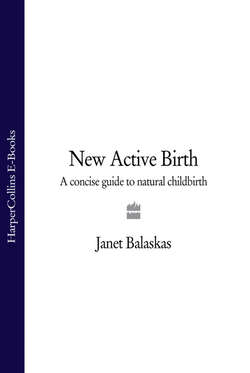Читать книгу New Active Birth: A Concise Guide to Natural Childbirth - Janet Balaskas - Страница 17
Recent studies
ОглавлениеOver the last few decades, as disillusionment with the routine application of high-tech obstetrics has increased, researchers all over the world have begun to explore normal physiological birth. Documented evidence has been available for over fifty years as to the physiological advantages of labour in upright, crouching positions. Certain principles of physics apply to childbirth and these are denied or negated when a woman gives birth lying down. The facilitating influence of squatting positions was also radiographically confirmed in the 1930s. It was shown that the cross-sectional surface area of the birth canal may increase by as much as 30 per cent when a woman changes from lying down on her back to the squatting position (19). And it is some twenty years since Scott and Kerr demonstrated the disadvantages of having the weight of a pregnant uterus pressing down on the back. Lying supine, the weight of the contracting uterus reduces the placental blood flow by compressing the large artery of the heart (the descending aorta) and the large veins leading to the heart (inferior vena cava). This is a hard clinical fact which should not be ignored by anyone involved with childbirth (20).
Most recent studies have revealed the definite advantages to a woman when she is walking about assuming upright positions during labour. The few, and they are a very small minority, who have not found any measurable advantage all conclude that there is definitely no disadvantage to being active and using upright positions during labour.
The majority of studies have established a control group and an experimental group. This has usually required that the control group remain supine or in some recumbent position in bed and that the experimental group assume an upright posture, sitting, squatting, kneeling or walking about. But other studies, which seem more convincing, have used the women as their own controls, asking them to alternate every thirty minutes between two positions – horizontal and upright – during the first and second stages of labour. These alternative approaches to examining the effect of position during labour both reveal similar positive results in favour of active upright labour and deliveries.
During the 1970s many studies were carried out in various parts of the world. In 1977, a study in Birmingham Maternity Hospital compared a group of women who walked about during labour with a group that lay down horizontally throughout most of labour. The results showed that the duration of labour was significantly shorter, the need for analgesics far less and the incidence of foetal heart abnormalities markedly smaller in the ambulant group than in the recumbent group. Women walking about also experienced less pain with uterine contractions, and they felt more comfortable upright. They concluded convincingly that walking about during labour, especially early labour, should be encouraged (21).
In Latin America, Dr Roberto Caldeyro-Barcia organised a collaborative study involving two maternity hospitals. Vertical labour positions (sitting and standing) and horizontal positions (side lying and lying on the back) were studied. Their effects on the labour and on the condition of the baby were compared (22). In 1972 in America, Dr Isaac N. Mitie of Indiana compared women in the second stage of labour, half of whom were lying down and the other half in sitting positions (23). Dr Yuen Chou Lui headed a study of sixty women in labour in two hospitals, one in New York City and the other in Washington (24).
These are a few of the many studies giving positive evidence of the benefits of walking about and using upright labour and birth positions. Most studies confirmed that uterine contractions were stronger and more efficient in dilating the cervix. Even though these studies were carried out in birthing environments which could be improved, the results were already impressive when only the attitude to posture was changed.
